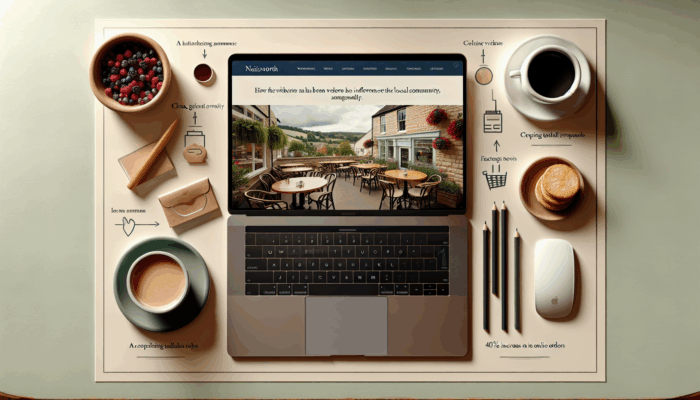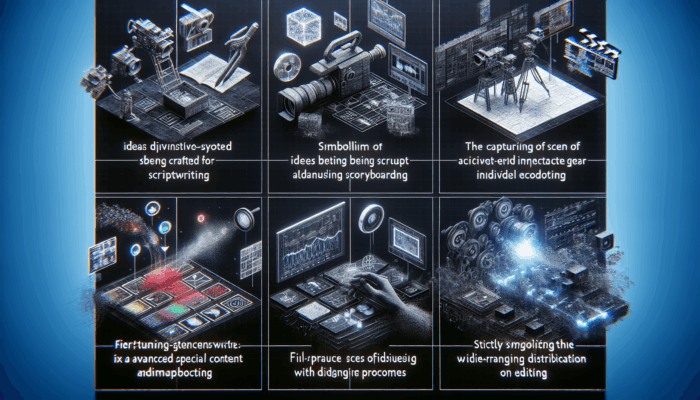Table of Contents
ToggleHarnessing the Advantages of Collaborative Content Creation for Maximum Impact
Explore the Transformative Advantages of Team Collaboration

Engaging in collaboration acts as a powerful catalyst for both creativity and innovation, uniting varied perspectives and areas of expertise to produce richer content while fostering stronger connections. By collaborating, individuals and organisations can amalgamate their unique insights and experiences, leading to the development of compelling narratives and engaging content that resonates with audiences worldwide. The importance of teamwork in the realm of content creation cannot be overstated, as it not only fuels creativity but also significantly enhances the quality and reach of the materials being published, ensuring they capture attention and drive meaningful engagement.
The benefits of collaboration extend far beyond the mere generation of ideas; they encompass a wide spectrum of advantages that can revolutionise your content strategies. Some notable benefits include:
- Enhanced Creativity: Diverse perspectives foster innovative ideas.
- Broader Audience Reach: Merging networks amplifies visibility.
- Increased Credibility: Joint efforts signify trust and authority.
- Resource Sharing: Gain access to varied skills and tools.
- Improved Productivity: Collaborative workloads lead to quicker results.
- Stronger Relationships: Collaboration fosters meaningful connections and trust.
- Innovative Solutions: Collective input can resolve complex challenges.
- Long-Term Value: Collaborative projects yield enduring advantages.
The process of co-creating content not only enriches the material produced but also lays the groundwork for future partnerships, initiating a cycle of creative synergy that propels all involved parties forward, ensuring continued growth and innovation. By fostering these collaborative relationships, organisations can not only enhance their content but also build a network of allies that can support various initiatives in the future.
Building Strong Networks through Collaborative Content Creation
Creating collaborative content is a strategic approach to expanding one’s professional network. By partnering with like-minded individuals and organisations, you can cultivate relationships that may lead to fresh opportunities, partnerships, and valuable link-building prospects. The collaborative process inherently unites people, facilitating dialogue and engagement that can culminate in fruitful connections. This aspect is especially pertinent in a globalised environment where content frequently transcends borders and cultural frontiers, fostering a rich tapestry of shared knowledge and insights.
As you engage in collaborative projects, you are not merely producing content; you are weaving an intricate web of connections that can amplify your visibility and authority within your domain. These connections often translate into tangible link-building opportunities, as collaborators are likely to share and promote the project across their networks. This cross-pollination of audiences can significantly enhance the reach and impact of your content. Moreover, participating in collaborative initiatives can position you as a thought leader, attracting additional opportunities to collaborate and create valuable links that further bolster your online presence.
Enhancing Credibility through Collaborative Partnerships
When you choose to collaborate with other professionals or organisations, you inherently elevate your credibility. This collaborative effort sends a clear message to your audience that you are trusted by peers within your field, showcasing mutual respect and shared objectives. Such credibility is crucial in an environment where authenticity and trustworthiness are of utmost importance, particularly in the realm of digital content. The perceived value of your links is heightened as they embody a partnership rooted in expertise and respect, establishing a strong foundation for audience trust.
Furthermore, collaborating with established figures in your industry can infuse an additional layer of authority into your content. Audiences often seek information from reputable sources, and the combined credibility of multiple contributors can substantially enhance the perceived value of your work. This collective trust not only renders the links stemming from these projects more desirable but also encourages further engagement and interaction from audiences eager to learn more from credible voices, ultimately leading to a more impactful content strategy.
Leveraging Collective Skills for Superior Content Creation

Bringing together the skills and knowledge of a diverse team can lead to the production of content that is of significantly higher quality. Collaborative efforts harness the strengths of each participant, resulting in a richer tapestry of ideas and insights that can elevate the overall message and engagement levels. When individuals with varied areas of expertise unite, the outcome is often content that is both informative and engaging, appealing to a wider audience while addressing different aspects of a topic comprehensively.
The collaborative process also promotes continuous improvement. As team members exchange feedback and iterate on ideas, the content matures into something more polished and impactful. This collective approach not only produces superior content but also attracts increased audience engagement. When content resonates with viewers, it naturally garners more backlinks, further amplifying its reach and authority. Therefore, leveraging the collective skills of a team is not merely advantageous; it is essential for crafting content that stands out in a competitive marketplace and meets the evolving needs of the target audience.
Proven Strategies for Engaging in Collaborative Content to Boost Link Building
Implementing Effective Strategies for Successful Collaboration
Initiating and sustaining successful collaborative content projects necessitates strategic planning and execution. The process begins with the establishment of clear goals and mutual expectations. As you embark on this collaborative journey, consider the following actionable strategies to ensure success and maximise the potential of your link-building efforts:
- Define Clear Objectives: Establish shared goals for the project that align with your overall strategy.
- Choose the Right Partners: Select collaborators with complementary skills and expertise that enhance the project.
- Set a Framework: Outline the project timeline and expected deliverables to maintain focus and efficiency.
- Encourage Open Communication: Foster an environment where feedback is appreciated and constructive.
- Utilise Project Management Tools: Leverage technology to streamline processes and keep everyone on track.
- Celebrate Milestones: Acknowledge achievements to maintain motivation and enthusiasm throughout the project.
- Be Flexible: Adapt to changes and embrace new ideas that may arise during the collaboration.
- Evaluate and Reflect: Assess outcomes to enhance future collaborations and identify areas for improvement.
By integrating these strategies, teams can cultivate a collaborative spirit that lays the foundation for successful projects while maximising link-building opportunities and ensuring that the final output meets the expectations of all involved parties.
Measuring the Impact of Collaborative Links on Your Strategy

Monitoring and evaluating the effectiveness of links acquired through collaborative content initiatives is vital for understanding the return on investment and refining future strategies. To gauge impact, various metrics and analytical tools can be employed. First and foremost, consider the total number of backlinks generated from the collaborative content. This metric serves as a direct indicator of the reach and influence of your efforts, reflecting the level of engagement your content has achieved.
Beyond mere quantity, it is equally important to assess the quality of backlinks. Links from high-authority websites to your content can significantly bolster your site’s credibility and enhance its SEO performance, ultimately leading to improved rankings in search engine results. Additionally, analysing traffic sources can provide insights into how audiences are engaging with the collaborative content. Are users arriving via social shares, referral links, or organic search? Understanding these pathways can inform your future content strategies and help you refine your approach to maximise engagement.
Furthermore, engagement metrics such as time spent on page, bounce rates, and social media shares can offer deeper insights into the effectiveness of the collaborative content. By continuously tracking these metrics, you can make informed adjustments to your approach, ensuring that each collaborative effort not only meets but exceeds expectations while fostering ongoing engagement with your audience.
Tackling Challenges in Collaborative Projects Effectively
While the creation of collaborative content presents numerous advantages, it is not without its challenges. Common obstacles include differing visions among collaborators, miscommunication, and logistical hurdles that can impede progress. To navigate these issues, it is essential to establish a clear framework and maintain open lines of communication from the outset. Setting ground rules regarding decision-making processes and conflict resolution can help mitigate potential disputes and ensure that everyone is on the same page.
Additionally, nurturing a positive and inclusive team culture can significantly enhance collaboration. Encouraging all team members to voice their ideas and concerns leads to a more harmonious working environment, where creativity can flourish. When individuals feel valued and heard, they are more inclined to contribute meaningfully to the project, enhancing the overall quality of the output.
Lastly, it is crucial to regularly monitor progress and remain willing to adapt as necessary. Flexibility in collaborative efforts allows teams to pivot when challenges arise, ensuring that projects stay on track. By proactively addressing challenges and fostering an empowering team environment, you can elevate the overall success of collaborative content creation, ultimately leading to greater results and more impactful content.
What Is the Process of Collaborative Content Creation?
Identifying Suitable Collaborators for Successful Projects
Identifying the right partners for collaborative content is fundamental to the project’s success. This process involves closely examining potential collaborators’ expertise, audience, and goals to ensure alignment with your own objectives and vision. Consider the following criteria when selecting collaborators to ensure a harmonious partnership:
- Complementary Skills: Seek partners whose skills enhance your own, filling in any gaps in expertise.
- Reputation: Choose individuals or organisations with a solid standing in your industry to enhance credibility.
- Shared Values: Collaborators should share similar values and vision to ensure a cohesive effort.
- Audience Overlap: Assess whether their audience aligns with your target demographic for maximum impact.
- Willingness to Collaborate: Ensure they are open to sharing and contributing to the collective effort.
- Experience: Prior experience in collaborative projects can be advantageous for smoother execution.
- Creativity: Look for individuals who bring innovative ideas to the table, enriching the project.
- Communication Style: Seek partners who communicate effectively and openly, fostering a positive environment.
By carefully considering these criteria, you can identify collaborators who will not only contribute valuable insights but also help elevate the quality and reach of your collaborative content, leading to a more successful outcome.
Strategic Planning and Execution of Collaborative Projects
Effective planning and transparent communication are crucial for executing successful collaborative content projects. The planning phase requires outlining the project’s objectives, deliverables, and timeline, ensuring that all parties are aligned from the start. Initiate the process by defining the content type, whether it is a blog post, video, or infographic, and establish the key messages you aim to convey to your target audience.
Once the foundational aspects are established, assign roles and responsibilities based on each collaborator’s strengths and expertise. A clear division of labour streamlines the workflow and ensures that each member comprehends their specific contributions, enabling a smoother collaborative process. Regular check-ins during the execution phase are vital for maintaining momentum and addressing any challenges that may arise, ensuring the project stays on track.
Moreover, utilising project management tools can facilitate smooth collaboration. These platforms allow for real-time updates, shared documents, and efficient communication, ensuring that everyone remains engaged and informed throughout the project lifecycle. By prioritising careful planning and effective execution, you can create collaborative content that meets its objectives and resonates with the intended audience while maximising link-building opportunities.
What Are the Best Practices for Effective Content Sharing?
Implementing effective content sharing practices maximises the reach and impact of collaborative projects. To ensure that your collaborative content gains the attention it deserves, consider adopting the following best practices for distribution and outreach:
- Leverage Each Collaborator’s Network: Encourage all partners to share the content within their networks, amplifying exposure.
- Utilise Social Media: Post engaging snippets on social platforms to drive interest and encourage sharing.
- Craft Compelling Headlines: Create attention-grabbing titles that entice readers and spark curiosity.
- Use Email Marketing: Send newsletters featuring the collaborative content to your subscribers, driving traffic and engagement.
- Engage Influencers: Reach out to influencers who can amplify your message and broaden your audience.
- Optimise for SEO: Incorporate relevant keywords to enhance discoverability and attract organic traffic.
- Encourage Interaction: Prompt readers to share their thoughts and engage with the content, fostering community.
- Track Performance: Monitor engagement metrics to refine future sharing strategies and optimise outreach efforts.
By adopting these best practices, you can significantly increase the visibility and impact of your collaborative content, ensuring it reaches a broad audience and generates valuable links that contribute to your overall online strategy.
The Influence of Technology on Collaborative Content Creation
Essential Tools for Effective Collaborative Content Creation
Utilising the right technology can greatly enhance the collaborative content creation process, making it more efficient and effective. A plethora of tools are available that facilitate various aspects of collaboration, from project management to content editing. Some popular tools include:
- Trello: A project management tool that helps in organising tasks and deadlines effectively.
- Google Docs: Allows for real-time document editing and collaborative writing, enabling seamless contributions.
- Slack: A communication platform that fosters team discussions and updates, enhancing connectivity.
- Canva: A graphic design tool that enables collaborative content creation with ease.
- Miro: An online whiteboard for brainstorming and visual collaboration, promoting creativity.
- Asana: A task management tool to track progress and responsibilities, ensuring accountability.
- Zoom: For virtual meetings and discussions that enhance communication and collaboration.
- Dropbox: A file-sharing platform that allows easy access to shared documents, streamlining workflows.
These tools not only facilitate smoother collaboration but also ensure that all team members can contribute effectively, regardless of their location. By leveraging technology, teams can create high-quality content in a more streamlined manner, paving the way for successful collaborative projects that resonate with audiences and drive engagement.
How Can Technology Streamline Link-Building Efforts?
Technology plays a pivotal role in streamlining the link-building process within collaborative content efforts. Automation tools can help identify potential link opportunities, allowing teams to focus their efforts on high-impact targets. By utilising data analysis software, teams can evaluate their content’s performance, identifying which pieces generate the most backlinks and engagement while refining their overall strategy.
Moreover, technology facilitates efficient outreach strategies. Email outreach platforms can automate the process of contacting potential link partners, tracking responses and engagement metrics. This efficiency is crucial for building relationships that lead to valuable backlinks. Additionally, analytics tools can provide insights into which link sources are most effective, allowing teams to refine their strategies and target their outreach efforts more effectively for maximum impact.
In a rapidly evolving digital landscape, embracing technology not only enhances efficiency but also empowers teams to build links more strategically, ultimately driving traffic and authority to their content while enhancing overall visibility.
Ensuring Security and Privacy in Collaborative Projects
Maintaining security and privacy during collaborative projects is paramount, especially when sensitive information is involved. Each collaborator should be aware of the data protection policies and practices in place to safeguard information. Establishing clear guidelines regarding data sharing and confidentiality can help mitigate risks and ensure a secure environment for all parties involved.
Utilising secure file-sharing platforms with encryption ensures that sensitive content is protected during the collaboration process. Additionally, implementing user access controls allows team leaders to manage who can view or edit specific documents, providing an extra layer of security. Regularly reviewing access permissions is also important to ensure that they remain relevant as team dynamics change, fostering a secure and trustworthy collaborative environment.
Moreover, fostering a culture of security awareness among team members can further enhance the protection of sensitive information. Providing training on best practices for data privacy will instil a sense of responsibility in each collaborator. By prioritising security and privacy, teams can collaborate effectively without compromising their integrity or the trust of their audience, ultimately leading to stronger collaborations and outcomes.
Leveraging Technology for Real-Time Collaboration
Technology has revolutionised the way teams collaborate in real-time, enhancing the efficiency and effectiveness of content creation. Tools that enable real-time editing and communication play a crucial role in streamlining collaborative projects. This capability allows team members to work together seamlessly, regardless of their physical location, fostering a dynamic and responsive collaborative environment.
Real-time collaboration tools, such as Google Docs and Microsoft Teams, enable multiple users to edit documents simultaneously, fostering immediate feedback and input. This dynamic interaction can significantly accelerate the content creation process, allowing for quicker iterations and refinements. Additionally, integrated communication features within these platforms ensure that discussions can occur alongside the content development, enhancing clarity and reducing misunderstandings that can arise in less interactive settings.
The benefits of real-time collaboration extend beyond efficiency; they also promote a sense of unity and engagement among team members. By working together in a digital environment, collaborators can exchange ideas and foster creativity in ways that traditional methods may not allow. Embracing these technologies not only enhances the content creation process but also cultivates a collaborative culture that drives success and innovation across projects.
Research-Backed Advantages of Engaging in Collaborative Content for Link Building
Boosting SEO Performance Through Collaborative Efforts
Research consistently demonstrates that collaborative content initiatives can yield significant enhancements in SEO performance. By pooling resources and expertise, teams can create high-quality content that attracts backlinks from reputable sources. An increased number of backlinks signals to search engines that the content is credible and valuable, ultimately boosting domain authority and search rankings across various platforms.
A compelling example of this is a collaborative blog series developed by several marketing experts, which garnered numerous backlinks from industry-leading websites. This project not only improved the SEO rankings of all participating authors but also solidified their authority within the marketing niche. The positive correlation between collaborative efforts and improved SEO metrics underscores the value of engaging in joint content initiatives that strategically enhance visibility and engagement.
Furthermore, as collaborative content frequently reaches broader audiences, it inherently attracts more organic traffic. The more users interact with the content, the higher the likelihood of gaining additional backlinks. By embracing collaboration, content creators can leverage the collective power of their networks to amplify their online presence and drive substantial SEO improvements that benefit all parties involved.
What Are the Long-Term Benefits of Collaboration?
The long-term advantages of collaborative content creation extend well beyond immediate metrics and results. As teams engage in joint efforts, they cultivate stronger relationships that can lead to ongoing partnerships and collaborative projects in the future. These enduring connections foster an environment of trust and support, encouraging further innovation and creativity that can drive success over time.
Collaborative content also contributes to sustained traffic growth. As quality content continues to attract backlinks and shares over time, the visibility of all collaborators increases, resulting in a compounding effect on traffic that can significantly enhance overall online presence. This sustained presence can lead to ongoing audience engagement and loyalty, which are crucial for long-term success in building a reputable brand.
Moreover, collaborative efforts often lead to a rich exchange of knowledge and experiences. This exchange enhances the skills of all participants, enabling them to produce even more impactful content in future collaborations. The relationships and expertise gained through collaboration create a robust foundation for continued success, ensuring that all involved benefit from the collective experience long after the project concludes, ultimately contributing to a vibrant and interconnected community.
Enhancing Brand Visibility and Expanding Audience Reach
Collaborative content initiatives can significantly boost brand visibility and help reach new audiences. By partnering with other brands or influencers, you can tap into their established audiences, exposing your content to a wider demographic that may not have been accessible otherwise. Data-driven insights reveal that partnerships often lead to a marked increase in brand exposure and engagement, enhancing the overall impact of your marketing efforts.
For instance, a collaborative video series featuring multiple industry experts can attract viewers from each participant’s audience, exponentially increasing reach and engagement. As your brand becomes associated with reputable collaborators, your credibility also grows, leading to a favourable perception among potential customers and establishing a stronger foothold in your respective market.
Additionally, collaborative content can encourage audience engagement through various channels, from social media shares to comments on blog posts. This interaction not only boosts visibility but also fosters community and loyalty among followers, creating a supportive environment around your brand. By strategically collaborating with others, brands can leverage collective influence to enhance their visibility and establish a stronger presence in their respective markets, ultimately driving growth and success.
What Are the Key Components of Successful Collaborative Content?
Aligning Goals and Objectives for Effective Collaboration
For collaborative content to succeed, it is imperative that all parties involved have aligned goals and objectives. When collaborators share a common vision, it enhances cohesion and ensures that everyone is working towards the same outcomes. This alignment is critical from the outset of the project, as clearly defined objectives set the foundation for effective collaboration and successful outcomes.
To achieve this alignment, it is advisable to engage in initial discussions where each collaborator can articulate their expectations and desired outcomes. Establishing shared goals fosters accountability, as each participant understands their role in contributing to the overall success of the project. Regular check-ins can help maintain alignment throughout the process, ensuring that any shifts in focus are addressed promptly and effectively.
Moreover, documenting goals and objectives can serve as a reference point for all collaborators. Having a written record fosters transparency and keeps everyone accountable to the agreed-upon vision. By prioritising alignment, teams can create engaging content that reflects their collective effort and resonates with their audience, ultimately achieving the desired impact.
Ensuring Consistent Quality and Style Across Contributions
Maintaining consistency in quality and style is essential for collaborative content, as it ensures a cohesive voice and standard across contributions. When multiple collaborators contribute to a project, upholding uniformity in tone, style, and quality can be a challenging yet crucial task. A disjointed presentation can dilute the overall message and confuse the audience, undermining the effectiveness of the collaborative effort.
To ensure consistency, begin by establishing a style guide that outlines the tone, language, and formatting preferences for the project. This guide serves as a reference for all collaborators, ensuring that their contributions align with the established aesthetic and meet the expected quality standards. Engaging in periodic reviews during the content creation process can also help maintain quality, allowing team members to provide feedback and suggest adjustments to ensure a polished final output.
Furthermore, encouraging open communication among collaborators can improve the cohesion of the content. By discussing each contributor’s unique writing style and adapting to a shared voice, the final product will feel more integrated and polished. Prioritising consistency not only enhances the professionalism of the content but also fosters a unified brand image that resonates with the audience, ultimately leading to greater engagement and success.
How to Foster a Productive Collaborative Environment?
Creating a positive and productive collaborative environment is crucial for the success of content projects. Fostering such an atmosphere encourages participation and innovation among team members, driving engagement and creativity. To build a collaborative environment, consider implementing the following strategies:
- Encourage Open Dialogue: Foster a setting where collaborators feel comfortable sharing ideas and feedback.
- Provide Constructive Feedback: Promote a culture of supportive feedback to enhance contributions and improve outcomes.
- Recognise Contributions: Acknowledge individual efforts to motivate team members and foster a sense of belonging.
- Encourage Inclusivity: Ensure all voices are heard and valued during discussions to promote diverse perspectives.
- Set Clear Expectations: Define roles and responsibilities to eliminate confusion and enhance accountability.
- Facilitate Team-Building Activities: Strengthen relationships through informal bonding opportunities that nurture collaboration.
- Be Adaptable: Embrace flexibility to accommodate different working styles and preferences among team members.
- Celebrate Success: Acknowledge milestones to maintain enthusiasm and motivation throughout the project.
By implementing these strategies, teams can create a collaborative atmosphere that nurtures creativity and engagement, ultimately leading to successful content projects that achieve their intended impact and resonate with audiences.
Implementing Effective Communication Strategies for Collaboration
Clear and regular communication is vital for maintaining a successful collaborative content project. Ineffective communication can lead to misunderstandings, delays, and frustration among collaborators, ultimately jeopardising the project’s success. Establishing effective communication strategies from the outset is essential for ensuring a smooth workflow and productive collaboration.
Begin by setting up regular check-ins or meetings to discuss progress, address challenges, and share updates. These touchpoints provide an opportunity for all team members to voice concerns and contribute ideas, fostering a collaborative spirit. Additionally, utilising collaborative communication tools such as Slack or Microsoft Teams can facilitate real-time discussions and streamline communication, ensuring that everyone remains engaged and informed throughout the project.
Encouraging an open feedback culture is also critical. Team members should feel comfortable providing input on each other’s contributions, fostering an environment of continuous improvement. This approach not only enhances the quality of the content but also strengthens team dynamics, creating a positive and productive collaborative experience. By prioritising effective communication, teams can navigate challenges more easily and maintain alignment throughout the collaborative process.
Maximising Collaboration with the Right Technology and Tools
The right technology and tools can significantly enhance collaboration and streamline the content creation process. By leveraging various platforms and software, teams can improve efficiency and ensure that everyone is actively engaged in the project. Consider the following ways technology can boost collaboration:
- Centralised Document Sharing: Use cloud-based platforms like Google Drive to store and share documents securely and efficiently.
- Project Management Tools: Implement software such as Asana or Trello to track tasks and deadlines, enhancing organisation.
- Real-Time Editing: Enable simultaneous editing through tools like Google Docs for collaborative writing and feedback.
- Communication Platforms: Utilise Slack or Microsoft Teams for effective team communication and collaboration.
- Feedback Tools: Use platforms that allow for comments and suggestions in documents for seamless collaboration and improvement.
- Analytics Software: Implement tools that track the performance of collaborative content, providing valuable insights for future projects.
- Visual Collaboration Tools: Employ platforms like Miro for brainstorming sessions and visual planning to enhance creativity.
- Video Conferencing Tools: Use Zoom or similar platforms for virtual meetings and discussions to enhance communication and collaboration.
By thoughtfully selecting and implementing these tools, teams can foster a collaborative spirit and create high-quality content while minimising friction in the process. Embracing technology not only enhances efficiency but also cultivates a culture of collaboration that drives success and innovation across projects.
Optimising Link-Building Opportunities through Collaboration
Identifying Content with High Link-Building Potential
Not all collaborative content offers equal potential for link-building. Identifying which pieces of collaborative work possess the most value in generating backlinks is essential for maximising impact. Begin by analysing the content’s relevance to current trends or popular topics within your industry. Content that aligns with trending discussions or addresses pressing issues is more likely to attract attention and links from reputable sources.
Additionally, consider the existing authority of the platforms on which the content will be published. Collaborating with well-respected websites or influential figures increases the likelihood that your content will be shared and linked, amplifying its reach. Evaluating the target audience’s interests can also provide insights into which topics might yield the best link-building opportunities, guiding your collaborative efforts towards maximum impact.
Furthermore, content formats that typically perform well for link acquisition include in-depth guides, case studies, and infographics. These formats are often more shareable and can serve as valuable resources for others looking to link back to credible sources. By carefully evaluating the content’s potential and its alignment with audience interests, teams can maximise their link-building opportunities through collaboration, ultimately enhancing their online visibility and authority.
What Strategies Are Most Effective for Acquiring Links?
Various strategies can be employed to enhance link acquisition from collaborative content, and understanding which methods yield the best results is crucial for success. One effective approach is to create high-value, shareable content that addresses specific pain points or interests of the target audience. By delivering genuine value, you can attract organic backlinks as others reference your work, enhancing your overall authority and visibility.
Outreach is a fundamental component of link acquisition. Proactively reaching out to relevant websites, influencers, and bloggers within your industry to share your collaborative content can significantly enhance link-building efforts. Crafting personalised outreach messages that highlight the mutual benefits of linking to your content can increase response rates and foster relationships that lead to valuable backlinks.
Another effective strategy is leveraging social media to promote collaborative content. By sharing engaging snippets, visuals, or quotes from the content, you can generate interest and encourage followers to share and link back. Additionally, participating in relevant online communities or forums can help spark discussions around the collaborative content, leading to natural backlinks as users reference your work and contribute to the dialogue.
By employing these strategies, teams can enhance their chances of acquiring valuable links from collaborative content, thereby enriching their overall online presence and authority in their respective fields.
Utilising Social Media for Promoting Link Building
Social media serves as a powerful tool for promoting collaborative content and maximising link-building efforts. To effectively leverage social platforms, start by sharing snippets or highlights from the collaborative project. Engaging visuals and compelling messaging can capture the attention of your audience, encouraging them to explore the full content and share it within their networks, thereby amplifying its reach.
Encouraging collaborators to share the content on their social media channels is equally crucial. Each partner can tap into their audience, amplifying the content’s reach and increasing the likelihood of generating backlinks. Engaging with followers through comments and discussions can further encourage sharing and interaction, enhancing visibility and community engagement around the content.
Utilising social media analytics tools can provide insights into which posts perform best, allowing you to refine your strategies over time. Experimenting with different formats, such as videos, stories, and polls, can also enhance engagement and sharing. By strategically leveraging social media, teams can effectively promote collaborative content, generating valuable links and bolstering their overall online presence while creating a vibrant community of followers.
Future Trends in Collaborative Content Creation and Link Building
The Evolution of Collaborative Content Strategies
As the digital landscape continues to evolve, so too do the strategies for creating collaborative content. Emerging trends are shaping the ways teams approach collaboration, particularly with the increasing emphasis on authenticity and user-generated content. Audiences are now more discerning, seeking genuine connections and relatable narratives that resonate with their experiences and values.
The rise of multimedia content, particularly interactive formats such as webinars and live streams, is another trend influencing collaborative strategies. These formats encourage real-time engagement and foster community, making them increasingly popular for collaborative efforts. Additionally, the integration of data-driven insights into content creation is becoming essential, as teams leverage analytics to inform their strategies and optimise performance based on audience feedback and preferences.
As organisations focus on building long-term relationships with their audiences, collaborative content that prioritises value and engagement will be key. Embracing these evolving trends allows teams to stay ahead of the curve, effectively engaging their audiences while maximising link-building opportunities through innovative and impactful collaborative projects.
What Role Will Artificial Intelligence Play in Future Collaboration?
Artificial intelligence is set to play a transformative role in collaborative content efforts. As AI technology advances, it can streamline various aspects of collaboration, enhancing efficiency and effectiveness across teams. For instance, AI-powered tools can assist in content generation, providing ideas and suggestions that spark creativity among collaborators while reducing time spent on brainstorming.
Additionally, AI can enhance data analysis, helping teams identify trends, preferences, and engagement patterns among audiences. This insight enables more targeted content creation and outreach strategies, ultimately improving link-building efforts and maximising the impact of collaborative initiatives. Furthermore, AI can aid in personalising content, tailoring messages to specific audience segments to increase relevance and impact, thus driving higher engagement rates.
As AI becomes more prevalent in content creation and collaboration, teams will need to adapt their strategies to harness its capabilities effectively. Embracing AI tools can empower teams to create high-quality, engaging content while optimising their collaborative efforts and link acquisition strategies for greater success in the digital marketplace.
Adapting to Evolving Link-Building Practices
Link-building practices are continually evolving, influenced by changes in search engine algorithms, audience behaviours, and content consumption trends. To remain ahead of the curve, teams must be agile and willing to adapt their collaborative content strategies accordingly. A focus on quality over quantity is paramount; acquiring fewer high-quality links from authoritative sources is often more beneficial than accumulating numerous low-quality links that do not contribute to overall authority or credibility.
Moreover, staying informed about industry trends and algorithm updates is crucial for adapting link-building practices effectively. Engaging with the community through forums, webinars, and industry events can provide valuable insights into emerging best practices that can enhance collaborative efforts. Additionally, investing in ongoing education and training for team members ensures that the collaborative effort remains current and effective in a rapidly changing landscape.
As link-building practices evolve, collaboration will play a critical role in developing innovative strategies that align with changing landscapes. By embracing adaptability and focusing on quality and relevance, teams can enhance their link-building efforts through effective collaborative content creation that meets the needs of their audiences and drives growth.
Frequently Asked Questions
What constitutes collaborative content?
Collaborative content is produced by multiple contributors who share their skills, insights, and expertise to create high-quality pieces that benefit all parties involved, fostering a sense of community and shared ownership.
How can collaboration enhance link building?
Collaboration enhances link building by merging networks and expertise, leading to the creation of valuable content that attracts a broader audience and more backlinks from reputable sources.
What tools can facilitate collaborative content creation?
Tools like Google Docs, Trello, Slack, and Asana facilitate real-time collaboration, project management, and effective communication among team members, streamlining the content creation process.
Why is it important to measure the impact of collaborative links?
Measuring the impact of collaborative links helps teams understand their effectiveness, allowing for adjustments and optimisations in future collaborative efforts to maximise results.
What are the benefits of using technology for collaboration?
Technology streamlines the collaboration process, enhances communication, facilitates real-time editing, and provides data analysis for better decision-making and performance tracking in collaborative projects.
How can social media be leveraged for promoting collaborative content?
Social media can amplify the reach of collaborative content by allowing team members to share highlights, engage with audiences, and encourage sharing within their networks, thereby enhancing visibility and interaction.
What are some common challenges encountered in collaborative projects?
Common challenges include miscommunication, differing visions among collaborators, and logistical issues, which can be mitigated through clear communication, established guidelines, and a strong collaborative culture.
How does alignment of goals contribute to successful collaboration?
Aligned goals ensure that all collaborators work towards a common vision, enhancing cohesion and accountability throughout the project, ultimately leading to more effective outcomes.
Can AI improve collaborative content efforts?
Yes, AI can streamline content creation, enhance data analysis, and improve personalisation, making collaborative efforts more efficient and impactful through tailored insights and suggestions.
What future trends are shaping collaborative content strategies?
Trends such as the emphasis on authenticity, the rise of interactive content, and the integration of data-driven insights are influencing collaborative content strategies to meet evolving audience expectations.
Connect with us on Facebook!
The post Engage in Collaborative Content for Links: Unlocking Opportunities appeared first on Ezi Gold.
















